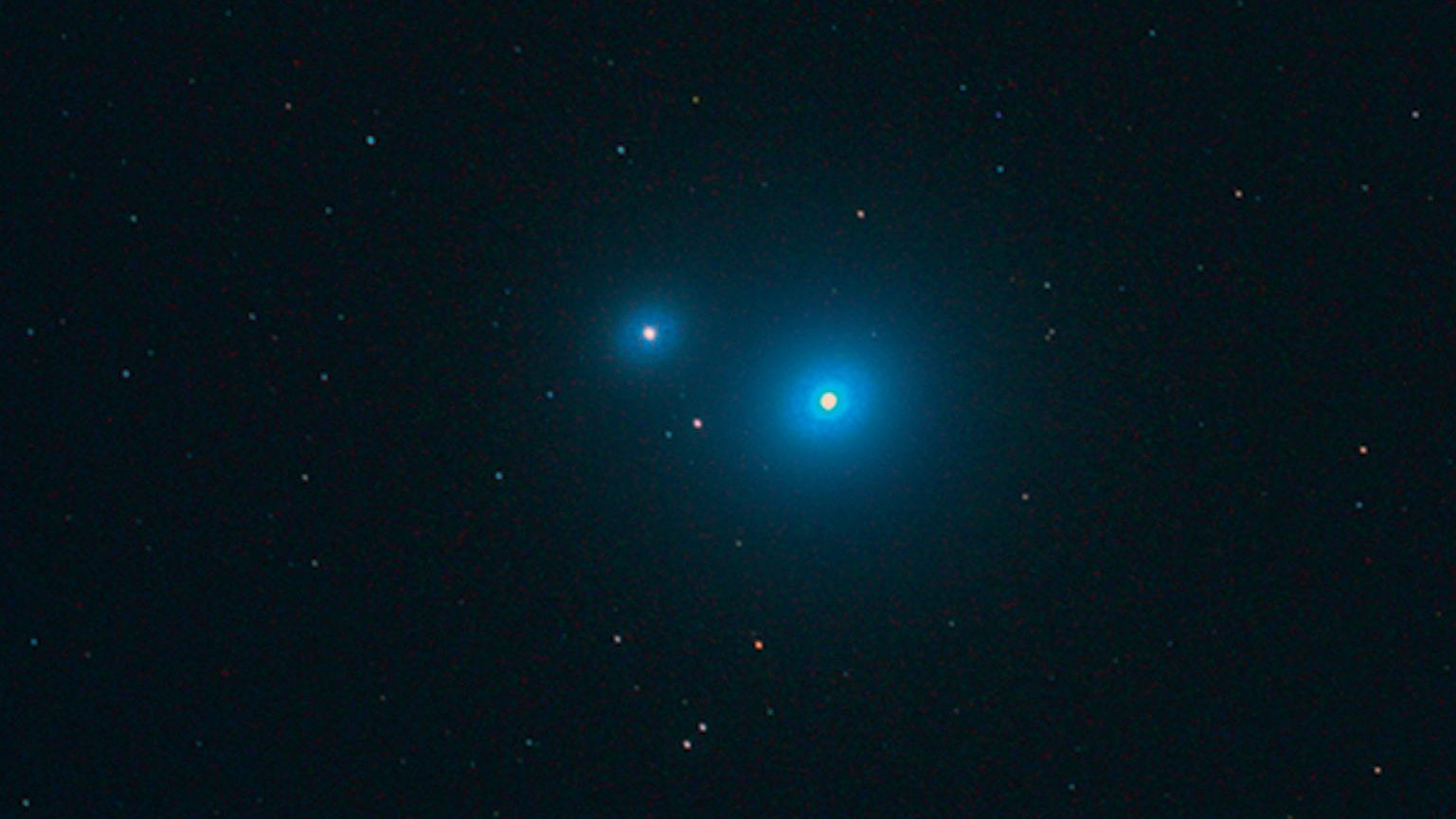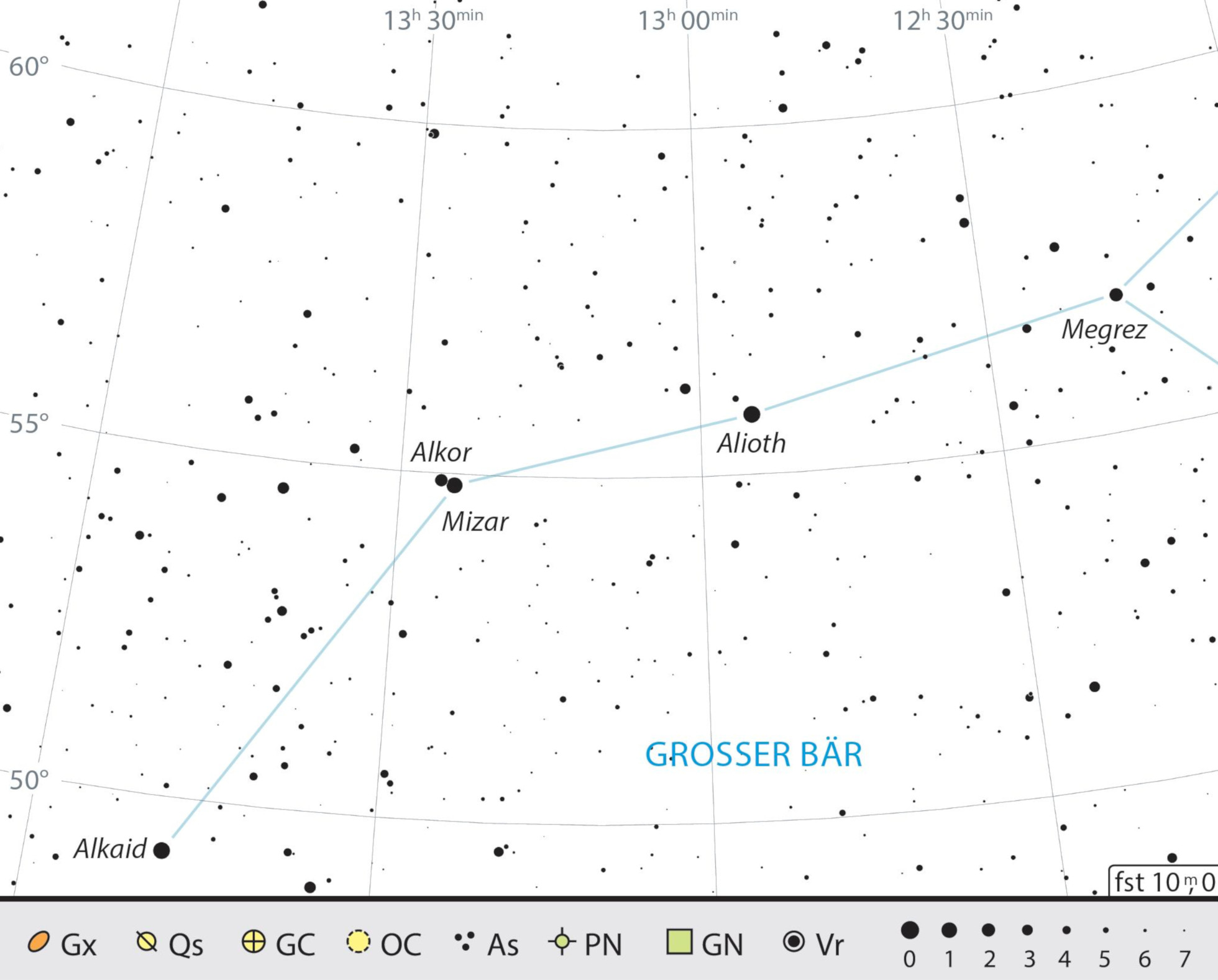Mizar and Alkor – more than just an eyesight test
If there were a ranking of the most popular objects in the night sky, then Mizar in the Big Dipper would certainly be among the top ten.
 Those who can also see star Alkor (left), have good eyesight. Mizar is itself a system comprising two binary stars. Rolf Löhr
Those who can also see star Alkor (left), have good eyesight. Mizar is itself a system comprising two binary stars. Rolf LöhrIf there were a ranking of the most popular objects in the night sky, then Mizar (oder ζ UMa) in the Big Dipper would certainly be among the top ten. It is not only easy to find – the Big Dipper’s handle makes a sharp bend at Mizar – but above all, the magnitude 2 bright star has been serving as a kind of eye-test for time immemorial, which gives every observer information about his visual acuity or the quality of his spectacles: anyone who manages to make out the second star, Alkor (also known as the Faint One), which is directly next to Mizar, with the naked eye, has passed the test and can boast excellent eyesight.
Double binary systems
 Mizar and its companion already appear in the Antwerp
edition of Apian's Cosmographia from 1545. Albireo Verlag
Mizar and its companion already appear in the Antwerp
edition of Apian's Cosmographia from 1545. Albireo VerlagHowever Mizar offers much more than just some optical fun. If you focus on it with a small or medium telescope at low magnification (30× to 50×), then an attractive formation consisting of several stars appears in your field of view, dominated by Mizar and, about twelve arc minutes north-east, its companion Alkor.
But it is also not difficult to see that Mizar is not only accompanied by Alkor, but also by a faint point of light, which lies about 14 arc seconds from the brighter component of Mizar. The unequal pair is not only pretty to look at, but it forms a binary system – a physical connection between two stars that is not often visible to the city observer. However, even in excellent conditions, it is not possible to detect that Mizar's components themselves form spectroscopic binary star systems.
A planet around Mizar?
Whether Mizar is also gravitationally connected with Alkor has not been conclusively determined, since at present the assumption is still that these stars are at different distances from Earth. Mizar is thought to be 78 light-years away, and Alkor 81 light-years away – a difference which, given the susceptibility to errors in estimating cosmic distances, does not allow for a clear conclusion on any actual connection between the two. It has however been clarified that another rather faint magnitude 8 star, with which Alkor and Mizar form an equilateral triangle, has no physical connection with them.
This weak point of light is about five times as far away from Earth, but gives rise to a rather lovely, historical anecdote. As a result of an observation made in the winter of 1722, the Giessen mathematician Johann Georg Liebknecht is said to have considered it to be a planet of Mizar and christened the star – as was the trend in those days to personify celestial discoveries – after his sovereign Ludwig V, the count of Hesse Darmstadt, Sidus Ludoviciana. Liebknecht believed he had discovered independent movement from the small star – a regrettable error. Today we still see Ludwig's star in the same place where Liebknecht first discovered it about 300 years ago.
 Location map of Mizar and Alkor in Ursa Major. J. Scholten
Location map of Mizar and Alkor in Ursa Major. J. Scholten